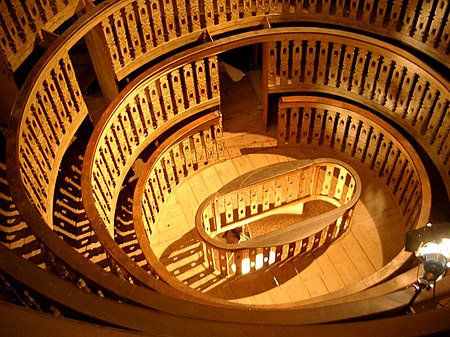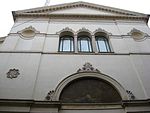Anatomical Theatre of Padua
1595 establishments in ItalyAnatomical theatresBuildings and structures in PaduaEducational institutions established in the 1590sUniversity of Padua

The Anatomical Theatre of Padua, Northern Italy, is the first permanent anatomical theatre in the world. Still preserved in the Palazzo del Bo, it was inaugurated in 1595 by Girolamo Fabrici of Acquapendente, according to the project of Paolo Sarpi and Dario Varotari. This theatre constituted the model for the anatomical theatres built during the seventeenth century in the main universities of Europe: all would have been based on the Paduan archetype. It is the symbol of a successful period in the University of Padua's history, and it is considered one of the most important achievements for the study of anatomy during the sixteenth century.
Excerpt from the Wikipedia article Anatomical Theatre of Padua (License: CC BY-SA 3.0, Authors, Images).Anatomical Theatre of Padua
Via otto Febbraio, Padua San Giuseppe
Geographical coordinates (GPS) Address Nearby Places Show on map
Geographical coordinates (GPS)
| Latitude | Longitude |
|---|---|
| N 45.407138888889 ° | E 11.877166666667 ° |
Address
Palazzo del Bo
Via otto Febbraio 2
35149 Padua, San Giuseppe
Veneto, Italy
Open on Google Maps








